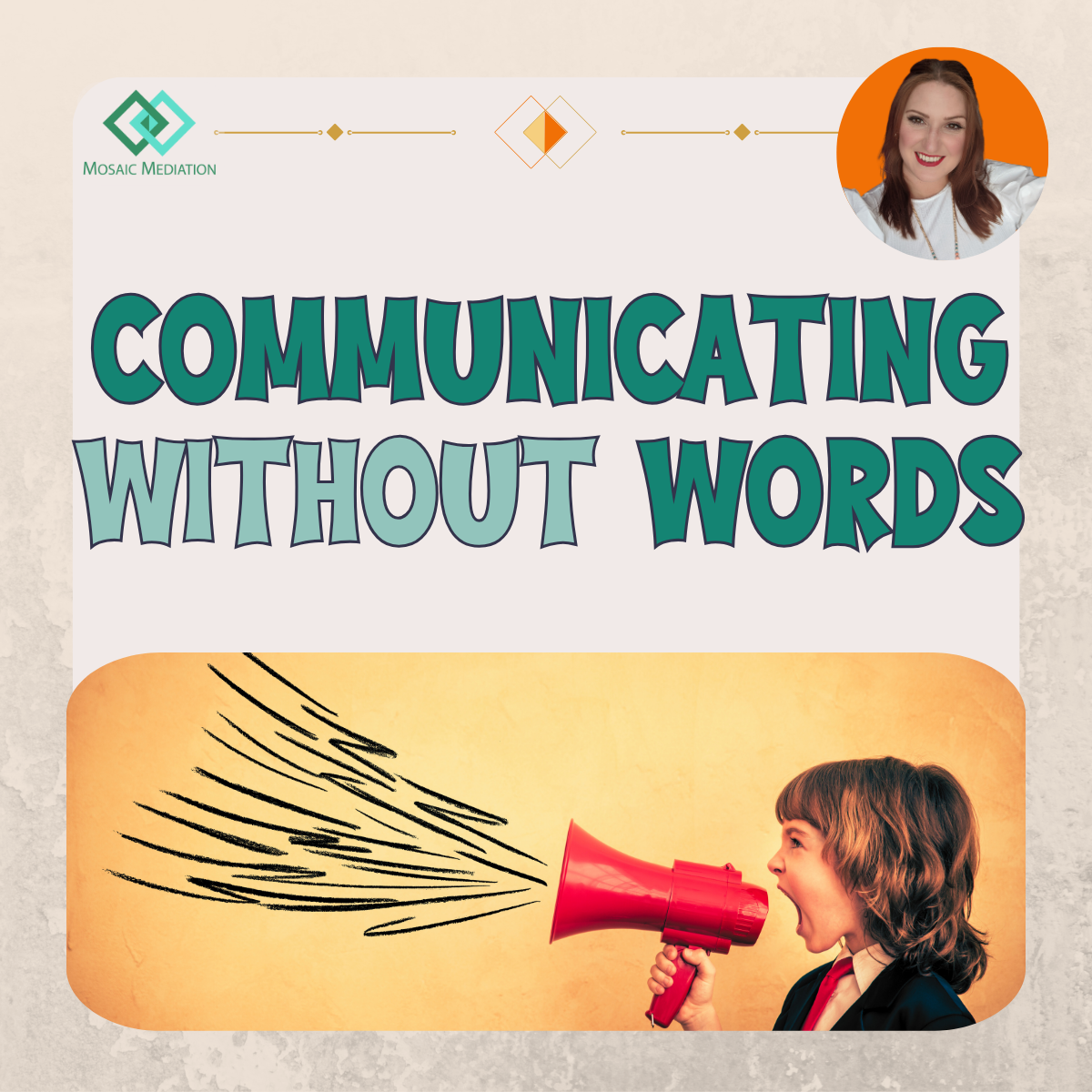Who's The Boss?
The manager-staff member relationship is a very tricky dynamic and, increasingly, I am aware of workplace situations where there are allegations of workplace bullying made by a staff member about their manager. In this kind of situation, there could be multiple factors coming into play: the management style of the manager; performance-related issues; workplace culture; home stresses; organisational changes; and difficult behaviours of the manager or staff member.
A mediator is not there to judge whether bullying has taken place, but they will recognise the need to raise the parties’ awareness about what may have led to such allegations being made. Though there are cases where intentional bullying has occurred, very often people are unfortunately unaware of how their approach is being received and, if not effectively addressed, will lead to situations of conflict. Encouraging self-awareness and space to think about what led to the point of conflict can give both the accused and the accuser clarity on whether bullying had taken place or whether any other factors may have played into the situation feeling like bullying.
Management style
"Management is doing things right; leadership is doing the right things" - Peter F. Drucker
Without a doubt there are different types of management style and, unfortunately, almost every approach will work for some but not for others. There is often a divide between the stereotypical ‘old school’ way of managing – to make decisions and relay instructions for staff members to carry out – and a more ‘democratic’ way of managing – listening to ideas from staff before deciding on an approach which suits the majority.
Where for one person an abrasive and authoritative style may be appreciated and what is required to push someone to achieve their best; for another such a style may make them feel de-valued or patronised. Where a ‘team player’ or ‘hands off’ manager may feel supportive and relatable to one staff member; to another, this approach may feel directionless or weak.
So, how can you manage staff effectively - or respond positively to being managed - when it seems to be such a subjective ‘ideal’? If the management style of the manager and the preferred way to be managed do not mesh, it is inevitable that there will be a dispute or conflict between them – even if it only manifests passive-aggressively.
Way of working
“The best executive is the one who has sense enough to pick good men to do what he wants done, and self-restraint to keep from meddling with them while they do it.” – Theodore Roosevelt
Some people like to be given clear directions on what to do and how to do it. Other people prefer general guidelines and a lot of freedom – the preferred approach of Theodore Roosevelt in the above quote. Some people prefer the latter approach but actually need the former. There are many theories on which management style and which way of working is the best, but in reality it can be very subjective, depending on the type of organisation, the workplace culture and the personalities involved.
Invariably I find that when a staff member is complaining about bullying from their manager, it is because they feel they are being ‘micro-managed’. Very few people enjoy being told what to do, but if that person feels like they are constantly being watched or the person giving the instructions doesn’t really understand their role, it can create serious difficulties for the manager and staff member to work together. This is especially true if they have previously been managed by someone who had more of a ‘hands-off’ approach. Even if it was a proactive decision to change the approach, such a dramatic change is likely to relay a completely ‘out of the blue’ sense of mistrust in their abilities.
At first it may appear that one person’s way of working and the manager’s approach to managing are worlds apart, yet it is very possible for people with different approaches to have a good working relationship . Mutual support with a united goal is the ideal: where the manager is supporting their staff member regarding external stressors or the stresses associated with their role; and, where the staff member is supporting their manager by presenting a positive and productive attitude at work.
So, how is this idyllic working relationship achievable?
1. Time
·Most relationships – social and professional – have ups and downs. When people have opposing ways of working, the ‘down’ is likely to happen in the first six months or so of working together. Both people then have a choice to make about how to deal with what’s going on so that working life is as stress-free as possible.
·It is totally possible to end up having a great working relationship after a bad start, if people allow for the possibility of change and improvement. A mindset that expects the worst is not likely to enable positive change.
2. Effective communication
·When people have different ways of working, assumptions can very easily be made about the other person’s intentions or character traits. The only way to handle this is to proactively be clear about your intentions and try not to let miscommunication or misunderstandings go unaddressed. If someone is struggling to trust you, make it clear that you can be trusted by honest communication and acting with integrity.
·Feedback given and received in an open and genuine way will speed up the process of reaching a positive way of working.
i.One of the biggest complaints made about managers is that they are telling staff what to do without truly understanding their job. If a manager noticeably seeks to understand the roles of their staff and is open to listening to ideas and feedback from them, the staff are less likely to feel that they are being managed ‘in ignorance’.
ii.Similarly, it is helpful to remember the pressure of management – often under the instruction or constraint of other management decisions or organisational restrictions. Managers often need to have difficult conversations, which they would prefer not to have, and to make decisions which may be taken personally, though they were not intended to be.
·The working relationship will also benefit from trying to judge when it is appropriate to challenge a decision or method, and when to give the benefit of the doubt. Then when it becomes necessary to challenge a decision, it is more likely to be well received rather than if challenges are made combatively, frequently or seemingly without ‘good basis’.
3. Patience
·It can be very frustrating to work with someone who doesn’t do what you would or doesn’t seem to understand you. It requires a lot more patience and giving the benefit of the doubt more than you would with someone whose management or working style is complimentary to yours.
·Being intentionally patient will prevent any unnecessary arguments or conflict.
4. Willingness
·It can be all to easy to write off the possibility that you can have a positive and productive working relationship if the experience so far has been negative. However, if one or both people can approach the initial concerns as an achievable challenge, the likelihood of eventually being able to work effectively together is completely possible.
·Willingness to seek to understand the other person’s intentions or their reasons behind decisions or actions, and a willingness to give the other person the benefit of the doubt rather than making assumptions, will provide clarity and further speed up the process of learning how to work together.
What starts off as being great effort to keep things working smoothly, with time, patience and effective communication, less effort is required, and a mutually beneficial way of working can be found.
This is not to say that such issues are always the fault of both people in even measure, or that managers don’t bully – some do. Nor, do I want to imply that difficult behaviours on behalf of the manager or the staff member should be overlooked – most should not. Sometimes, managers overstep the mark, get personal and make the workplace environment difficult, and in such a situation, the appropriate organisational processes should be followed. Equally, sometimes, staff members don’t perform to the standard required and when their performance is questioned, they may take such feedback constructively or receive it as bullying behaviour – whether it would objectively be considered as such, or not.
In most situations where the conflict between manager and staff member relates to their different working styles, following the above guidance should itself positively impact the working relationship. However, if the conflict has become entrenched or it has reached the point where an objective and external perspective is required, it is worth finding out whether mediation could be beneficial. Mediation is an extremely useful tool to break a negative relationship cycle; by helping each person understand the other, figure out how they got to the point of conflict, and how they can move forward positively.
If you would like to know more about mediation or think training on communication or conflict could benefit your organisation, please get in contact by emailing emma.jenkings@mosaicmediation.co.uk or through the Contact page .











